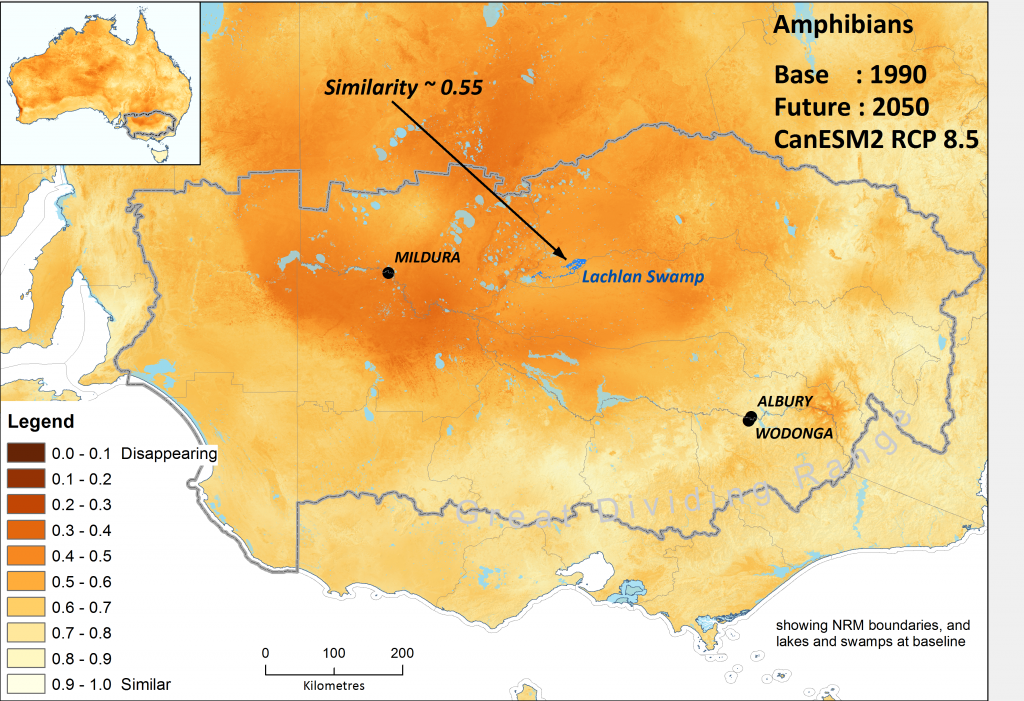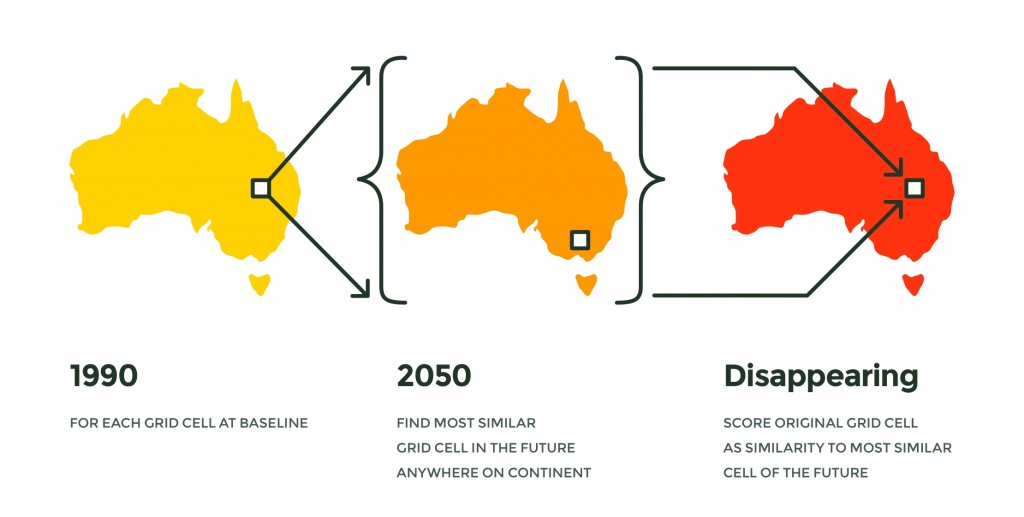Degree to which ecological environments are tending to disappear
- We use the term ‘disappearing ecological environments’ to refer to places where the species composition in its current form is unlikely to exist anywhere on the continent in the future.
- Disappearing ecological environments are calculated as the estimated ecological similarity between a location in the present (baseline) and its most similar location anywhere on the Australian continent in the future (2050). The calculation is applied to each location across the continent (figure below).
- The lower the similarity of a current location to any location on the continent in the future, the greater the degree to which that ecological environment is tending to disappear – to become unrepresented anywhere on the continent in the future.
Click on the boxes below to explore examples at national and regional scales.
-
 Example national context
Example national contextThis example under the high emissions’ mild MIROC5 climate scenario presents a relatively positive picture for reptiles – few areas are projected to disappear completely from the continent. Rather, most 1990 environments will be represented by moderately or quite similar environments somewhere on the continent in 2050, from the perspective of reptile habitat.

The degree to which ecological environments are tending to disappear across Australia for reptiles by 2050, under the high emissions’ mild MIROC5 climate scenario. Darker colours signify greater tendency to disappear. While the legend shows 10 categories, the mapped data itself is continuous.
-
 Example regional focus
Example regional focusThis regional example shows amphibian environments in the Murray River Basin under the high emissions’ hot CanESM2 climate scenario. It suggests that present-day amphibian environments found along the Great Dividing Range are least at risk of disappearing (indicated by paler colours). However, amphibian environments around the Lachlan Lakes system may be moderately at risk of disappearing, with a similarity to present environments of only ~55% by 2050.

Gradients in the degree to which ecological environments are tending to disappear for Australian amphibians under the high emissions’ hot CanESM2 climate scenario by 2050, within regions broadly associated with the Murray Basin. Darker colours signify greater tendency to disappear. While the legend shows 10 categories, the mapped data itself is continuous.

A schematic showing how the degree to which ecological environments are tending to disappear is mapped. Disappearing ecological environments are calculated by comparing a grid cell in the present (e.g., 1990 baseline climates) with all possible most similar cells in the future (e.g., 2050 climate scenario).
Ideas for using information on disappearing environments in planning are available under Planning Examples.

